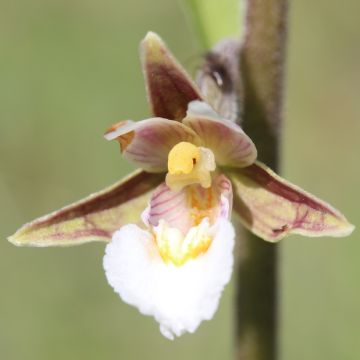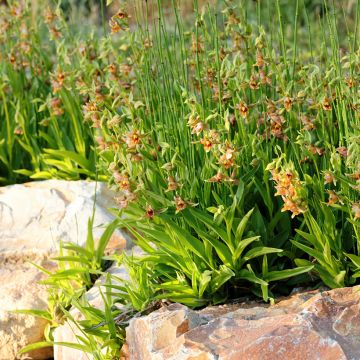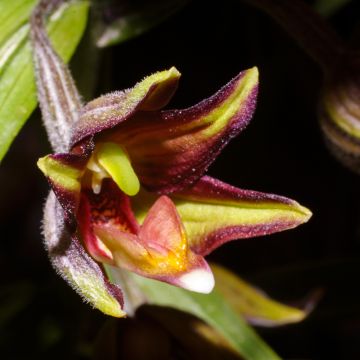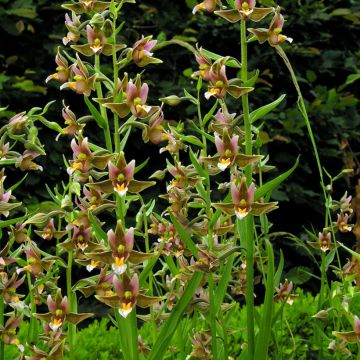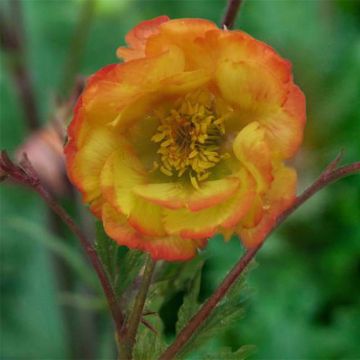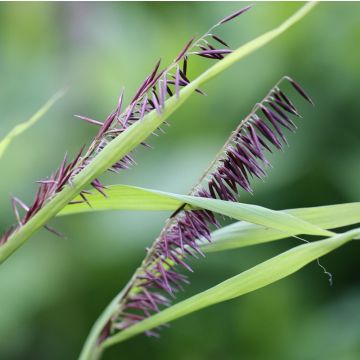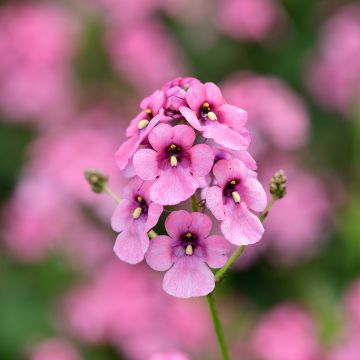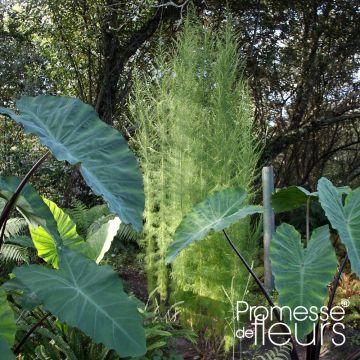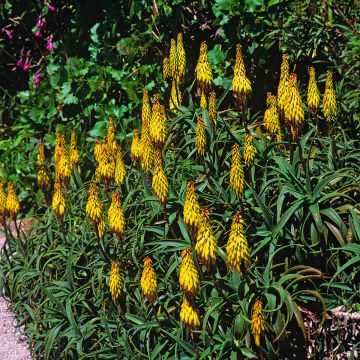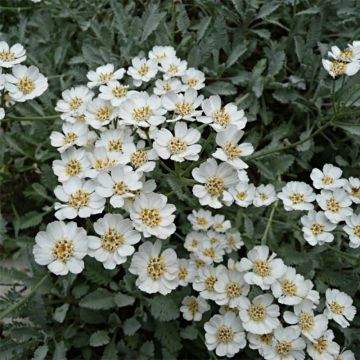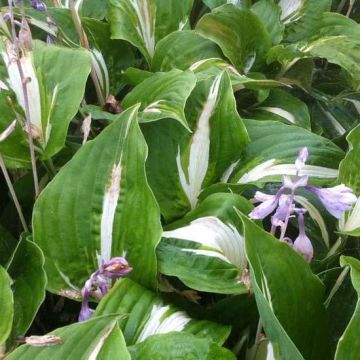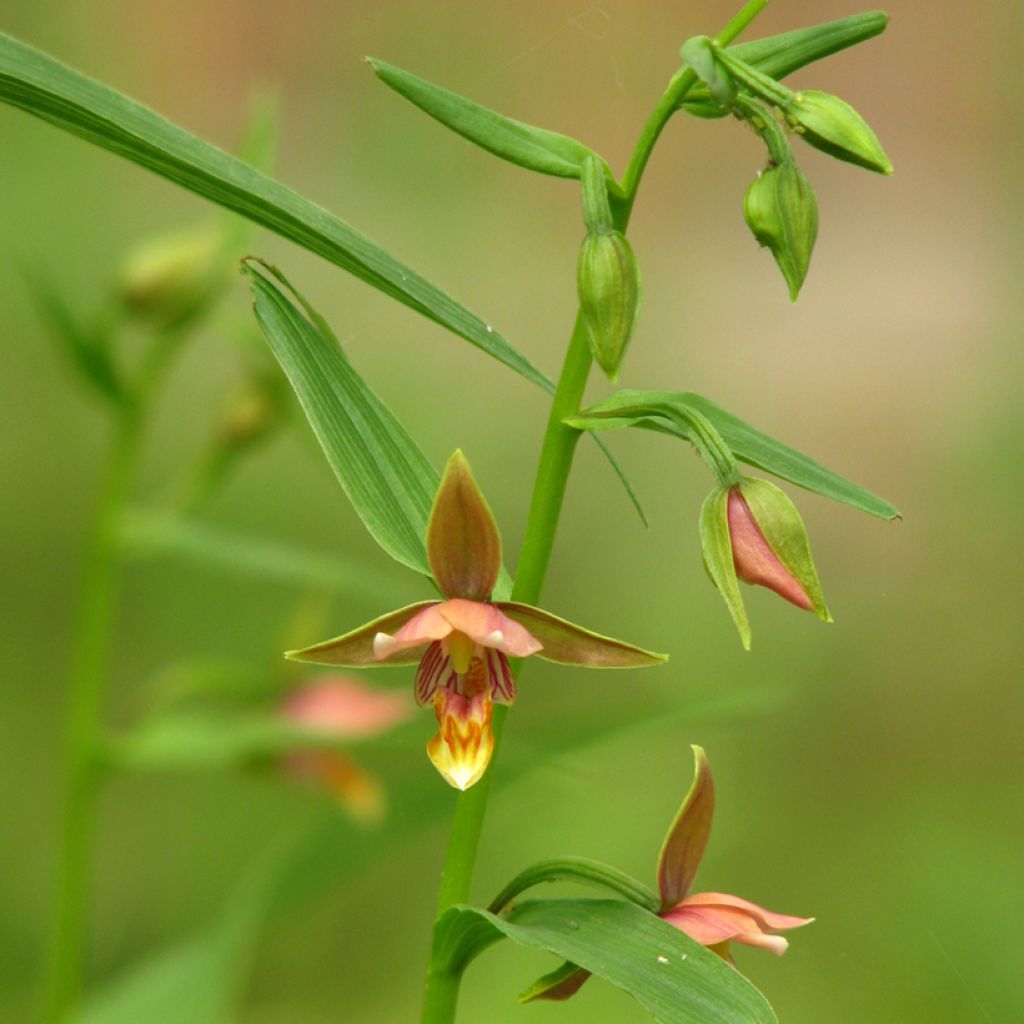

Epipactis thunbergii x gigantea
Epipactis thunbergii x gigantea
Epipactis thunbergii (x) gigantea
Giant Helleborine, Stream Orchid
Special offer!
Receive a €20 voucher for any order over €90 (excluding delivery costs, credit notes, and plastic-free options)!
1- Add your favorite plants to your cart.
2- Once you have reached €90, confirm your order (you can even choose the delivery date!).
3- As soon as your order is shipped, you will receive an email containing your voucher code, valid for 3 months (90 days).
Your voucher is unique and can only be used once, for any order with a minimum value of €20, excluding delivery costs.
Can be combined with other current offers, non-divisible and non-refundable.
Home or relay delivery (depending on size and destination)
Schedule delivery date,
and select date in basket
This plant carries a 12 months recovery warranty
More information
We guarantee the quality of our plants for a full growing cycle, and will replace at our expense any plant that fails to recover under normal climatic and planting conditions.
Would this plant suit my garden?
Set up your Plantfit profile →
Description
The Epipactis thunbergii x gigantea is a terrestrial orchid resulting from cross-breeding between an Asian species and an American species. It is a vigorous variety, with numerous floral buds that bloom into quite showy flowers, ranging in colour from orange to bronze, with a yellow lip marked with orange. They blossom for several weeks starting from June. To acclimate it, provide it with a light, moist, humid soil that is not waterlogged, rich in humus, and slightly acidic.
The Epipactis thunbergii x gigantea belongs to the orchidaceae family. It is the result of cross-breeding between Epipactis thunbergii and Epipactis gigantea. The former is a species native to Japan and colder regions of Northeast Asia. The latter, locally known as Stream Orchid, is native to the western states of the United States and northern Mexico. The Epipactis thunbergii x gigantea is a perennial plant with fleshy rhizomes, reaching a height of 70 to 80 cm and a width of 40 to 50 cm. Its deciduous vegetation emerges from the ground in spring and disappears in autumn. It consists of stems with 4 to 12 sheathing and lanceolate leaves measuring 5 to 15 cm long. Flowering occurs from June to August and can be more or less early, depending on the climate. The flower spike bears up to 15 flowers with a diameter of 4 cm. Each flower has three sepals and two petals. The lip is cup-shaped with a pointed protuberance. The flowers range from shades of orange to bronze, with a yellow lip marked with orange. The flowering is followed by forming a pendulous capsule measuring 2 or 3 cm long, containing thousands of tiny seeds.
The Epipactis thunbergii x gigantea is a robust plant not afraid of the cold. Very beautiful in flower beds or on the banks of water points, this perennial can also be grown in pots. In the garden, it prefers moist soil and makes an excellent streamside plant in a lightly shaded area. Despite its original appearance, it is also a plant with a natural look, easy to integrate into the garden. Combine it in a mass planting of moist to humid soil with willowherbs, meadowsweets, Japanese primroses, and astilbes that appreciate the same conditions and make beautiful subjects. Don't forget about Osmund ferns as well.
When you receive your orchids, handle them with care: these plants produce few roots and are delicate!
Report an error about the product description
Epipactis thunbergii x gigantea in pictures
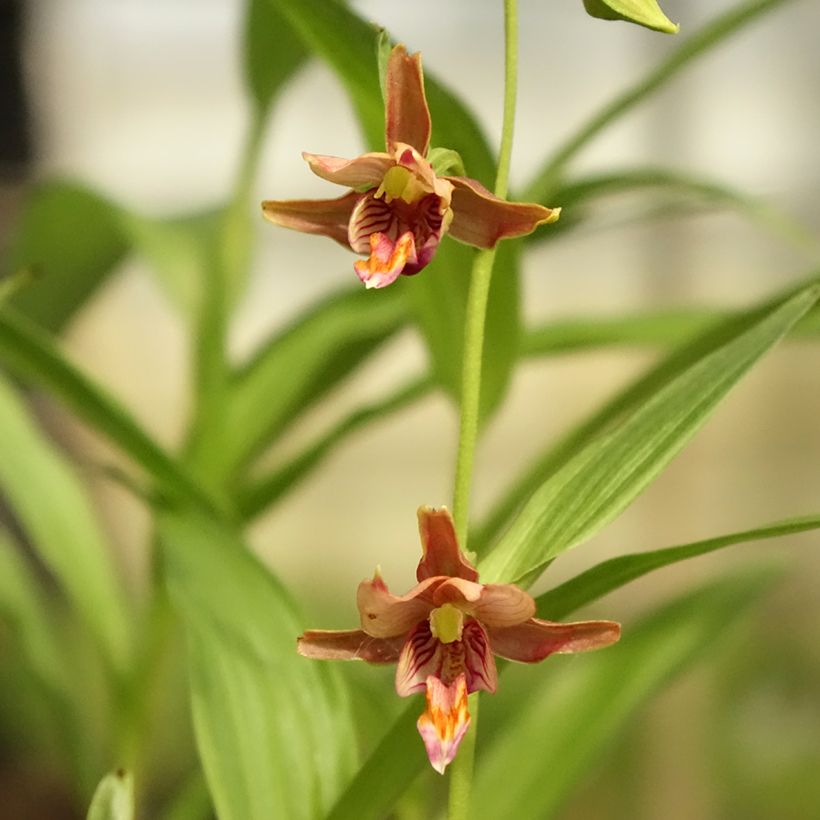



Flowering
Foliage
Plant habit
Botanical data
Epipactis
thunbergii (x) gigantea
Orchidaceae
Giant Helleborine, Stream Orchid
Cultivar or hybrid
Other Epipactis
View all →Planting and care
The cultivation of the Epipactis thunbergii x gigantea is relatively easy if one recreates its habitat: the bank of a stream or pond, on a rocky subsoil, in a humus-bearing and peaty, porous soil, consistently moist to wet, preferably acidic. It fears suffocating, heavy, clayey soils that are not well-aerated and impermeable. This plant appreciates full sun or partial shade. In open ground, its roots fear stagnant moisture in winter. Use a mixture of 60% peat soil, 20% horticultural compost, and 20% coarse sand in a pot. It will be necessary to ensure that the substrate remains consistently moist.
It needs constant water but not stagnant humidity, as this can be fatal in winter. However, the soil should never completely dry out. Pay attention to watering in summer, especially if the plant is exposed to the sun. Avoid scorching exposures, such as the afternoon sun in warmer climates.
Planting period
Intended location
Care
This item has not been reviewed yet - be the first to leave a review about it.
Similar products
Haven't found what you were looking for?
Hardiness is the lowest winter temperature a plant can endure without suffering serious damage or even dying. However, hardiness is affected by location (a sheltered area, such as a patio), protection (winter cover) and soil type (hardiness is improved by well-drained soil).

Photo Sharing Terms & Conditions
In order to encourage gardeners to interact and share their experiences, Promesse de fleurs offers various media enabling content to be uploaded onto its Site - in particular via the ‘Photo sharing’ module.
The User agrees to refrain from:
- Posting any content that is illegal, prejudicial, insulting, racist, inciteful to hatred, revisionist, contrary to public decency, that infringes on privacy or on the privacy rights of third parties, in particular the publicity rights of persons and goods, intellectual property rights, or the right to privacy.
- Submitting content on behalf of a third party;
- Impersonate the identity of a third party and/or publish any personal information about a third party;
In general, the User undertakes to refrain from any unethical behaviour.
All Content (in particular text, comments, files, images, photos, videos, creative works, etc.), which may be subject to property or intellectual property rights, image or other private rights, shall remain the property of the User, subject to the limited rights granted by the terms of the licence granted by Promesse de fleurs as stated below. Users are at liberty to publish or not to publish such Content on the Site, notably via the ‘Photo Sharing’ facility, and accept that this Content shall be made public and freely accessible, notably on the Internet.
Users further acknowledge, undertake to have ,and guarantee that they hold all necessary rights and permissions to publish such material on the Site, in particular with regard to the legislation in force pertaining to any privacy, property, intellectual property, image, or contractual rights, or rights of any other nature. By publishing such Content on the Site, Users acknowledge accepting full liability as publishers of the Content within the meaning of the law, and grant Promesse de fleurs, free of charge, an inclusive, worldwide licence for the said Content for the entire duration of its publication, including all reproduction, representation, up/downloading, displaying, performing, transmission, and storage rights.
Users also grant permission for their name to be linked to the Content and accept that this link may not always be made available.
By engaging in posting material, Users consent to their Content becoming automatically accessible on the Internet, in particular on other sites and/or blogs and/or web pages of the Promesse de fleurs site, including in particular social pages and the Promesse de fleurs catalogue.
Users may secure the removal of entrusted content free of charge by issuing a simple request via our contact form.
The flowering period indicated on our website applies to countries and regions located in USDA zone 8 (France, the United Kingdom, Ireland, the Netherlands, etc.)
It will vary according to where you live:
- In zones 9 to 10 (Italy, Spain, Greece, etc.), flowering will occur about 2 to 4 weeks earlier.
- In zones 6 to 7 (Germany, Poland, Slovenia, and lower mountainous regions), flowering will be delayed by 2 to 3 weeks.
- In zone 5 (Central Europe, Scandinavia), blooming will be delayed by 3 to 5 weeks.
In temperate climates, pruning of spring-flowering shrubs (forsythia, spireas, etc.) should be done just after flowering.
Pruning of summer-flowering shrubs (Indian Lilac, Perovskia, etc.) can be done in winter or spring.
In cold regions as well as with frost-sensitive plants, avoid pruning too early when severe frosts may still occur.
The planting period indicated on our website applies to countries and regions located in USDA zone 8 (France, United Kingdom, Ireland, Netherlands).
It will vary according to where you live:
- In Mediterranean zones (Marseille, Madrid, Milan, etc.), autumn and winter are the best planting periods.
- In continental zones (Strasbourg, Munich, Vienna, etc.), delay planting by 2 to 3 weeks in spring and bring it forward by 2 to 4 weeks in autumn.
- In mountainous regions (the Alps, Pyrenees, Carpathians, etc.), it is best to plant in late spring (May-June) or late summer (August-September).
The harvesting period indicated on our website applies to countries and regions in USDA zone 8 (France, England, Ireland, the Netherlands).
In colder areas (Scandinavia, Poland, Austria...) fruit and vegetable harvests are likely to be delayed by 3-4 weeks.
In warmer areas (Italy, Spain, Greece, etc.), harvesting will probably take place earlier, depending on weather conditions.
The sowing periods indicated on our website apply to countries and regions within USDA Zone 8 (France, UK, Ireland, Netherlands).
In colder areas (Scandinavia, Poland, Austria...), delay any outdoor sowing by 3-4 weeks, or sow under glass.
In warmer climes (Italy, Spain, Greece, etc.), bring outdoor sowing forward by a few weeks.































